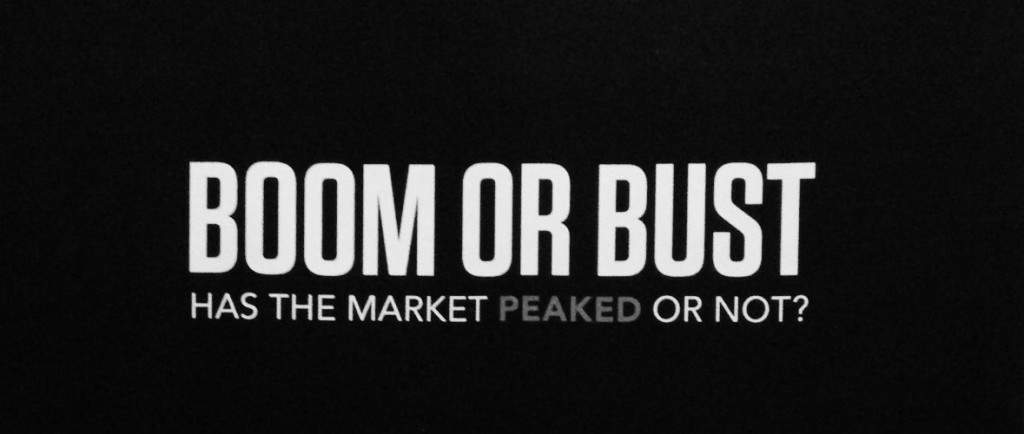
It’s been 25 years since the classic car market peaked last and then had a massive price correction. Will history repeat itself?
Trying to guess what the classic car market will do in 2015 or the future is a bit like trying to guess if the world stock markets will go up or down in any given year.
It is a somewhat futile exercise that provides little or no value. For one year a trend does not make.
But since I write a blog about classic cars and am a collector with a network of contacts, I thought I should provide some insight.
This year provided some ‘warning signs’ that collectors should pay attention to.
While this year was another record year in terms of strong prices with a record road car sold at public auction for $38m – the Ferrari 250 GTO – there were other signs that were less encouraging. First the 250 GTO sale price on a relative basis was a disappointment.
The headline number was a record- but there were expectations of a pre-sale value of $75m. Readers should not forget that in 2013 a GTO sold for $52m. While the condition of that car was better and it deserved a higher price- the 250 GTO Bonhams was not a success. To be blunt- the 250 GTO Ferrari fell short of everybody’s expectations, besides perhaps Simon Kidston (the Geneva based classic car expert who saw it correctly) who thought it would not sell for more.
We think the buyer got a good deal.
For one he got a reasonable entry ticket to the most exclusive club in the automotive world- which only 35 other owners share.
While the GTO was a disappointment the biggest warning sign this year came from one of my favorite cars; the infamous Ferrari 250GT SWB. The 250 SWB is a very rare car and only roughly 80 steel bodied cars were made. They are extremely desirable and beautiful. It is the ultimate dual-purpose car as the owners can race it at a track and then drive home with it later. In short the 250 SWB is the perhaps the most desirable Ferrari built in the 1960s.
The SWB is the car that every single collector around the world aspires to own (including this author). The last time a 250 SWB came up for sale at auction was 2009. Since then they have sold exclusively in private treaty sales*. So when several 250 SWB cars were being sold this year – expectations were high.
Everybody was wondering how the public auction market would value this Iconic car. What happened was nothing short of a spectacular-none of the two cars sold! In a year of records results and record collector monetary inflow to classic cars- the most desirable car does not sell! What happened?
The explanation is rather simple.
The owners had unrealistically high expectations – probably advised by the auction houses who thought the demand would be there -irrespective of price. How wrong they were. Gooding, the well known auction house run by David Gooding- see our interview with him here – was especially hard hit – underestimating the rationality of collectors despite the bull market for classic cars.
For this coming year in 2015 I see a few trends
First I think prices in general will not move higher- not even marginally.
In fact if I had to bet – it would be that they soften. I personally think we are in the process of peaking in the classic car market- this process could take a year or two. Having said that- cars with exceptional history, condition and rarity – they will hold their value. Trophy assets like a Ferrari 250 TR, 250 Tdf or 250 SWB- will hold up or suffer only minor price declines. Mercedes Gullwings, Ferrari 275 GTB/4 or alloy and Aston Martin DB4 GT will also fare well.
These are cars that are in such demand around the world and are reasonable in price (between $2-3m) that the rich will bid for them. The supply and demand equation with these cars are such that the demand is still way outstripping the supply (even though they made 1300 Gullwings).
I think it will be the middle range – car costing up to $1m or below that will get hit the most. Cars like the Porsche 356 Speedster, a ‘normal’ 911 (2.2L) or a Ferrari Dino 246 could get hit by heavier price declines. These cars suffer from two big problems. 1) they were made in large quantities 2)they experienced dramatic price increases in the past five years that are simply not sustainable.
The only cars that could continue their supersonic rise, are the 1980s cars that were on collectors bedroom walls as posters, cars such as the Lamborghini Countach P400, Porsche 959, and F4o.
These super cars could continue to see strength collectors continue to buy what was once a childhood dream.
(For those interested in Ferrari’s at it relates to economic cycles I highly recommend the article by Michael Sheehan in Jan 2013 – ‘Revisiting Ferrari’s cycles of boom & bust’)
*Private treaty sales are when deals are made between buyer and seller anonymously. In 2013 at least five Ferrari 250 SWB changed hands this way.
(Main image credit: Tim Scott Fluid Images / DK Engineering)
